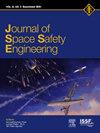监管层面的碰撞风险处理,以法国空间操作法为例
IF 1.7
Q3 ENGINEERING, AEROSPACE
引用次数: 0
摘要
随着空间拥挤问题的日益突出,许多国家法规和国际非约束性倡议开始关注空间交通管理需求。在不久的将来,特别是通过减少机动航天器的碰撞风险,以及更广泛地说,通过协调所有飞行阶段的空间活动,技术技术管理确实对实现空间飞行安全至关重要。在这些举措中,法国最近更新了其法律和监管框架,以提高在其权力下进行的空间操作的安全性和可持续性,并于2024年6月28日发布了新的适用版本的《法国技术法规》,解决了创新活动并显着改善了碰撞风险处理。虽然空间交通管理领域的所有最新发展都同意有必要更好地制定避免碰撞的做法,但在条例或非约束性文书范围内的实际执行情况可能略有不同,并反映了各种可能的减少风险措施。在简要介绍法国管理空间业务的国家法律之后,本文将详细探讨在引入碰撞风险管理义务方面所作的选择,并强调其业务影响。本文章由计算机程序翻译,如有差异,请以英文原文为准。
Collision risk handling at regulatory level, the example of the French space operations act
With the issue of congestion of space becoming more and more alarming, many national regulations and international non-binding initiatives are starting to focus on Space Traffic Management needs. STM will indeed be critical in the near future to enable space flight safety, especially through the mitigation of collision risk for maneuverable spacecraft, and more generally the coordination of space activities for all phases of flight. Among these initiatives, France has recently updated its legal and regulatory framework to improve safety and sustainability of space operations performed under its authority, with the publication, on June 28 2024, of a new applicable version of the French Technical Regulation addressing innovative activities and significantly improving collision risk handling. While all recent developments in the field of Space Traffic Management agree on the necessity to better frame collision avoidance practices, the actual implementation within regulations or non-binding instruments may slightly differ and reflect a wide range of possible risk reduction measures. After a brief introduction on the French national law governing space operations, this paper will explore in details the choices made towards the introduction of obligations regarding collision risk management, and highlight their operational implications.
求助全文
通过发布文献求助,成功后即可免费获取论文全文。
去求助
来源期刊

Journal of Space Safety Engineering
Engineering-Safety, Risk, Reliability and Quality
CiteScore
2.50
自引率
0.00%
发文量
80
 求助内容:
求助内容: 应助结果提醒方式:
应助结果提醒方式:


